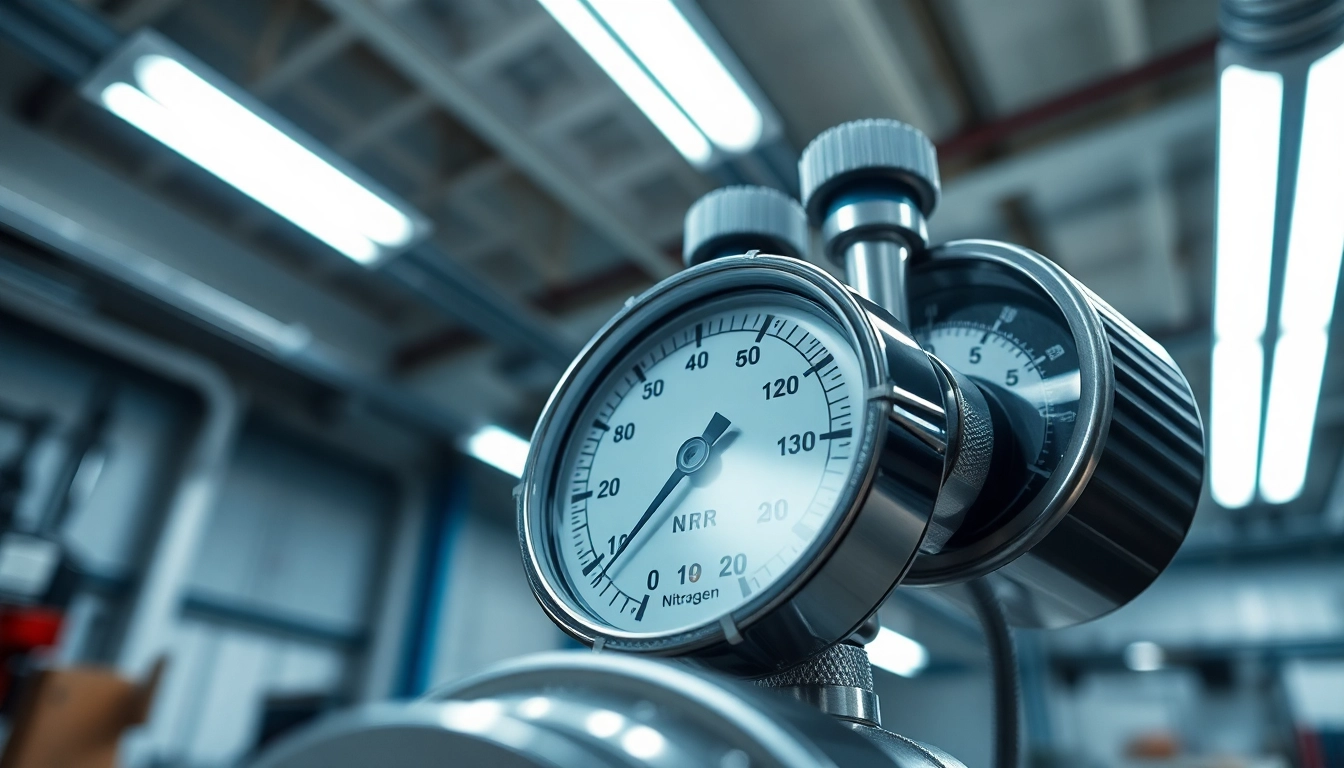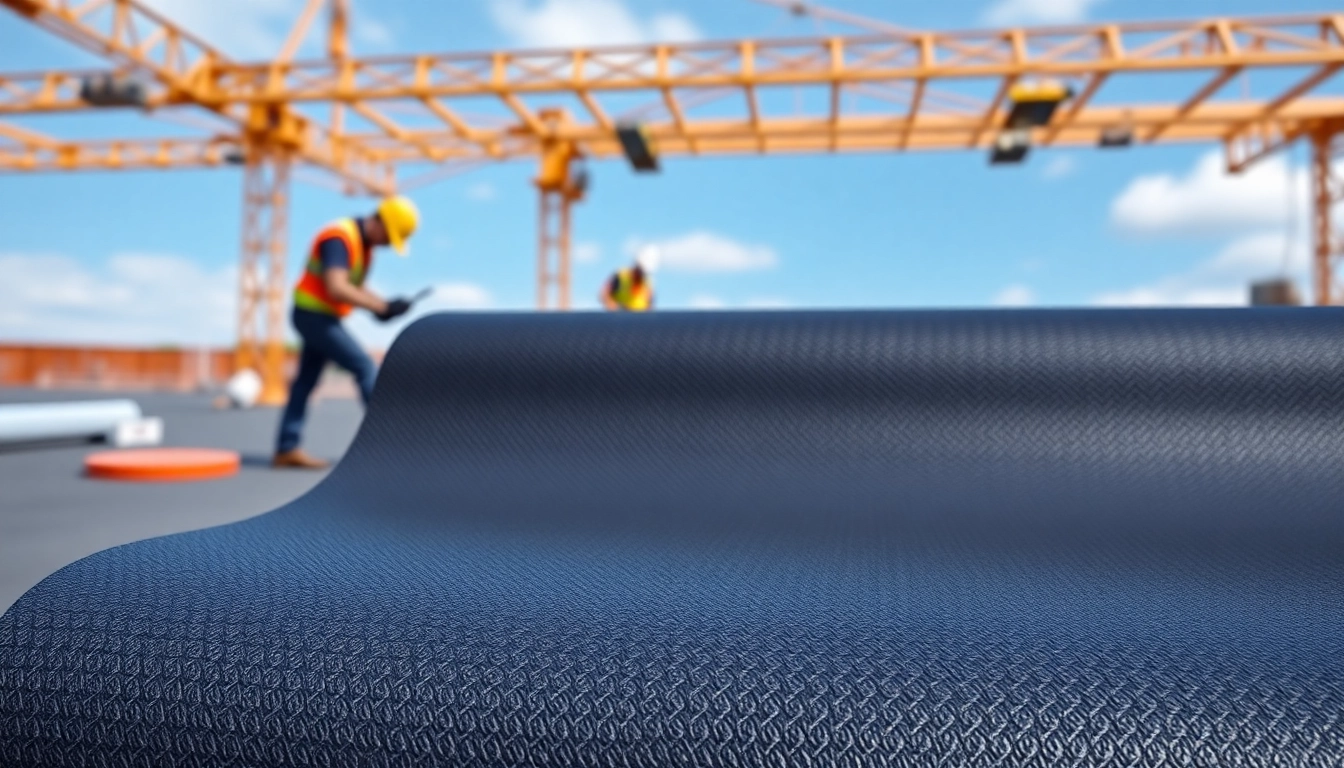Understanding Nitrogen Regulators
Nitrogen regulators play a critical role in managing gas pressure and flow in various applications ranging from industrial to food service environments. Whether you’re involved in HVAC systems or the food and beverage industry, understanding the functionality and necessity of a nitrogen regulator can help ensure processes operate efficiently and safely. This guide delves deep into nitrogen regulators, covering their components, types, and how to choose the right one for your needs. For more details on specific products, you can explore this nitrogen regulator category.
What is a Nitrogen Regulator?
A nitrogen regulator is a device that controls the pressure of nitrogen gas received from a pressurized cylinder. It ensures that the gas is delivered at a consistent and safe pressure, preventing fluctuations that could damage equipment or affect processes. Essentially, it regulates the high pressure of gas in the cylinder down to a lower, usable pressure, allowing for accurate and stable use in various applications.
Key Components of a Nitrogen Regulator
Nitrogen regulators have several key components that enable them to function effectively:
- Inlet Connection: This connects the regulator to the nitrogen cylinder, typically using CGA fittings.
- Pressure Gauge: Displays the pressure level in the cylinder and in the regulated output, allowing users to monitor pressure changes easily.
- Adjustment Knob: Enables users to set the desired outlet pressure by adjusting the spring-loaded diaphragm inside the regulator.
- Outlet Connection: Where the nitrogen gas exits the regulator, which can be configured to different fittings based on application requirements.
- Body Material: Most regulators are made from durable materials such as brass or stainless steel, designed to withstand high pressures.
Why Use a Nitrogen Regulator?
Using a nitrogen regulator is crucial for several reasons:
- Safety: Ensuring that nitrogen is dispensed at a stable pressure reduces the risk of accidents or equipment damage.
- Efficiency: Proper pressure regulation ensures optimal performance of equipment and tools, leading to better results in applications like welding or HVAC.
- Cost-Effectiveness: By maintaining appropriate pressure levels, nitrogen regulators can help minimize gas consumption, ultimately saving costs.
- Compatibility: Regulators also act as a safeguard against issues caused by incorrect pressure levels, extending the lifespan of the connected equipment.
Types of Nitrogen Regulators
Single-Stage vs. Dual-Stage Regulators
Nitrogen regulators can be broadly categorized into single-stage and dual-stage regulators, each serving unique applications.
- Single-Stage Regulators: These are ideal for applications where a constant supply pressure is maintained. They work by reducing the high pressure from the gas cylinder to a lower regulated pressure in one step. Suitable for lighter use, they are simpler and generally more affordable.
- Dual-Stage Regulators: Designed to stabilize pressure more effectively, dual-stage regulators reduce pressure in two stages. This design accommodates applications where pressure must be very stable, even during significant gas consumption, such as in large-scale industrial processes. They are more expensive but provide higher precision and performance.
High-Pressure vs. Low-Pressure Regulators
The choice between high-pressure and low-pressure nitrogen regulators depends largely on the application requirements.
- High-Pressure Regulators: These are made to handle incoming pressures of over 150 psi. They are commonly used in scenarios where large volumes of nitrogen gas are required quickly, such as in pneumatic systems or industrial setups.
- Low-Pressure Regulators: Lower than 150 psi, these regulators are more suited for applications like food service or brewing, where precise lower pressures are critical to maintain quality and consistency.
Specialty Nitrogen Regulators for Specific Applications
Some nitrogen applications warrant the use of specialty regulators, which may come engineered for particular needs. Examples include:
- Double Outlet Regulators: Useful where multiple applications require gas from the same cylinder.
- Inline Regulators: These are installed in line with gas delivery systems, offering adjustments to flow rates without altering pressures significantly.
- High-Purity Regulators: Ideal for laboratory applications where contamination must be minimized, ensuring the delivered nitrogen is free from impurities.
How to Choose the Right Nitrogen Regulator
Factors to Consider: Pressure and Flow Rates
When selecting a nitrogen regulator, it is critical to understand the specific pressure and flow rate requirements of your application. Evaluate the maximum inlet pressure supplied by your nitrogen cylinder and determine the outlet pressure you need. Flow rate requirements will also help inform whether a single-stage or dual-stage regulator is more appropriate.
Assessing Compatibility with Equipment
Ensure that the nitrogen regulator you choose is compatible with your equipment’s connection types and operational requirements. This may include checking the thread types, maximum pressure ratings, and flow characteristics expected of the regulator. It’s essential to validate that your equipment can handle the specific pressure levels that a chosen regulator may provide.
Brand and Quality Considerations for Nitrogen Regulators
Not all nitrogen regulators are created equal. Research reputable brands and manufacturers known for their durability, reliability, and excellent customer service. User reviews and expert recommendations can provide insights into the effectiveness and longevity of various regulators.
Installation and Maintenance of Nitrogen Regulators
Step-by-Step Installation Guide
Installing a nitrogen regulator requires careful attention to detail to ensure proper functionality and safety. Here’s a step-by-step guide:
- Gather Tools: Ensure you have the necessary tools, including wrenches and thread sealant (Teflon tape).
- Prepare the Cylinder: Make sure the nitrogen cylinder is upright and secure before beginning the installation process.
- Attach the Regulator: Screw the regulator onto the cylinder valve, ensuring it is adequately sealed. Use Teflon tape on threads if necessary.
- Connect the Outlet Hose: Attach the appropriate outlet hose or fitting to the regulator’s outlet connection, checking for a secure and leak-proof fit.
- Test for Leaks: Before using the regulator, slowly open the cylinder valve and check for gas leaks using soapy water; bubbles will indicate leaks.
Regular Maintenance Checks for Efficiency
To ensure optimal performance, regular maintenance of your nitrogen regulator is essential. Here are some key maintenance tasks:
- Periodic Inspections: Regularly inspect all components for wear or damage.
- Gauge Calibration: Ensure the pressure gauges are accurately calibrated and functioning properly.
- Cleaning: Clean any external parts to remove dirt, dust, or contaminants that may affect functionality.
Troubleshooting Common Issues with Nitrogen Regulators
If you encounter issues with your nitrogen regulator, consider these common problems:
- Pressure Fluctuations: Check for leaks in connections. Tighten fittings or replace seals as necessary.
- Low Flow Rate: This may indicate blockages in the outlet hose or improper regulator settings, necessitating adjustments.
- Incorrect Gauge Readings: If gauges show inaccurate readings, recalibration or replacement may be needed.
Applications of Nitrogen Regulators
Nitrogen Regulators in HVAC Systems
In HVAC processes, nitrogen regulators play an integral role in charging and testing HVAC systems. They help provide compressed nitrogen for pressure testing lines and systems, ensuring they are leak-free before any refrigerant is added. Maintaining the right pressure is crucial for avoiding damage during testing and keeping systems functioning efficiently.
Using Nitrogen Regulators in Food and Beverage Industry
Nitrogen regulators are extensively used in the food and beverage industry, particularly for nitrogen-infused beverages. In draft systems, they provide the necessary pressure to dispense drinks like nitrogen-infused coffee, beer, and soft drinks while ensuring product integrity. Maintaining optimal pressure prevents foaming and spills, ensuring quality service.
Industrial Applications for Nitrogen Regulators
Nitrogen has numerous industrial applications, including in metal fabrication and welding, where it is used as a shielding gas. Regulators ensure that nitrogen flows at the appropriate pressure for effective welds, protecting the weld pool from oxidation. In industries requiring inert atmospheres for chemical processes, carefully regulated nitrogen contributes to maintaining safe working environments.



